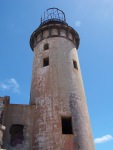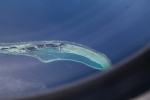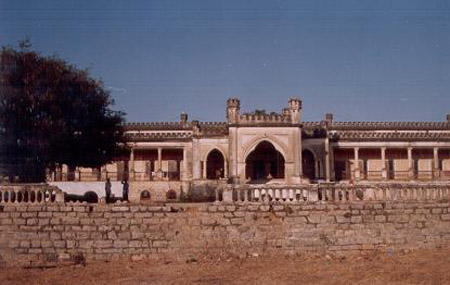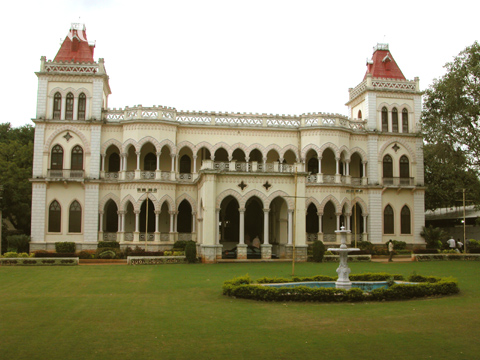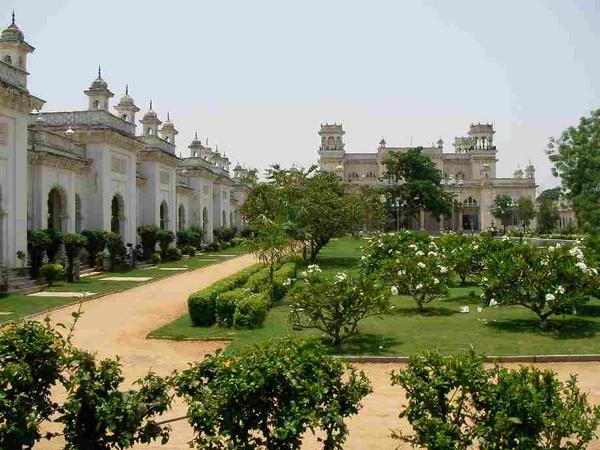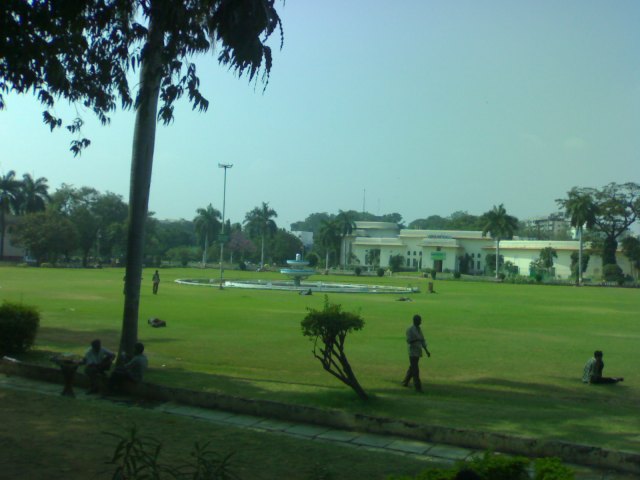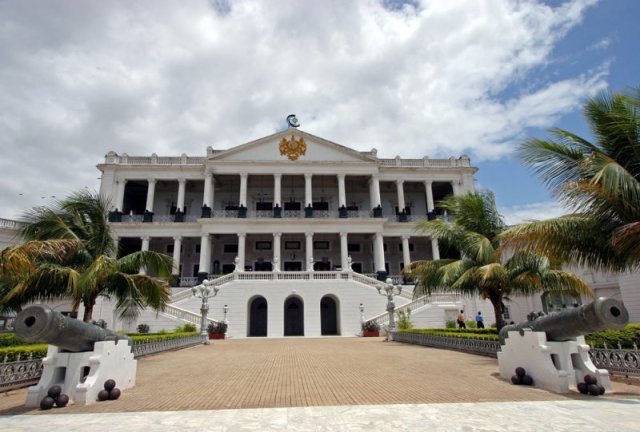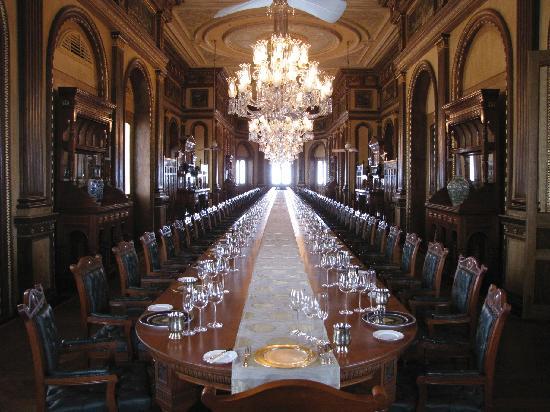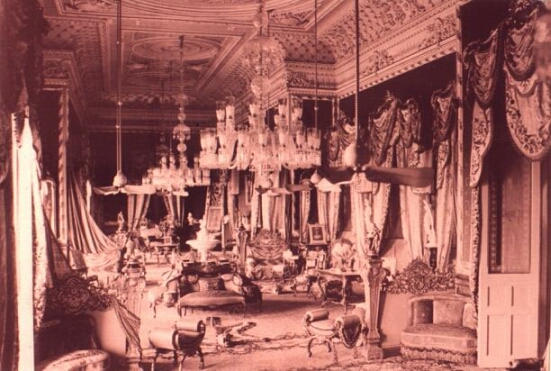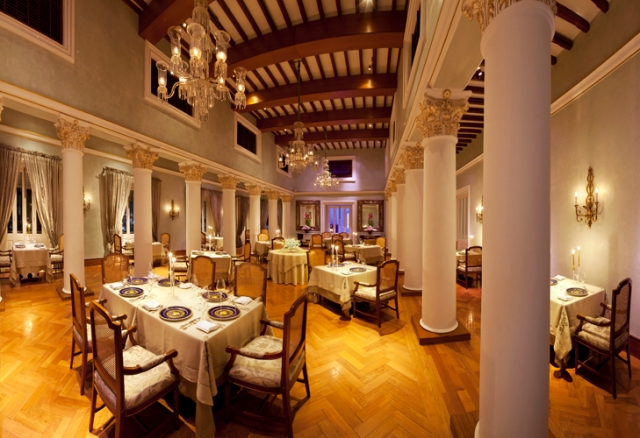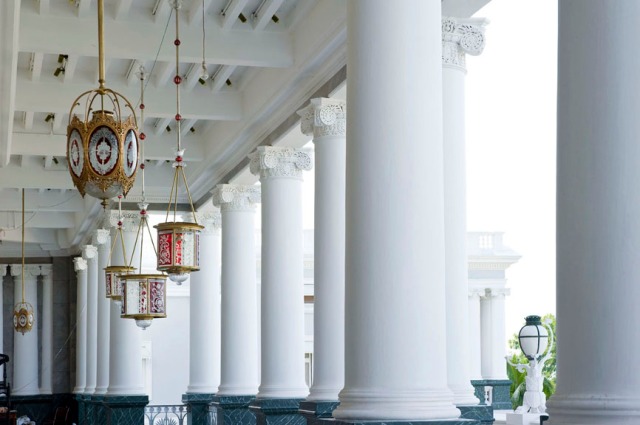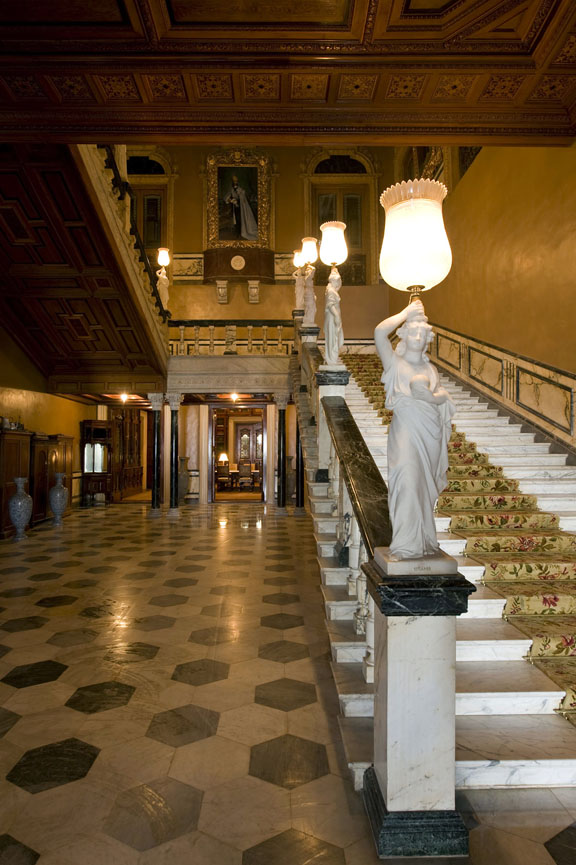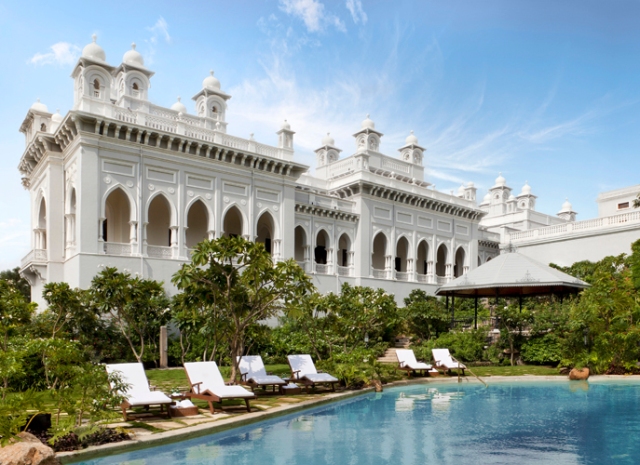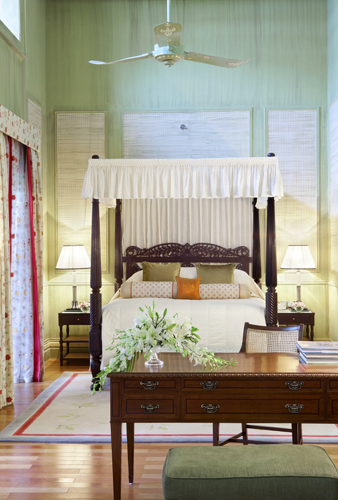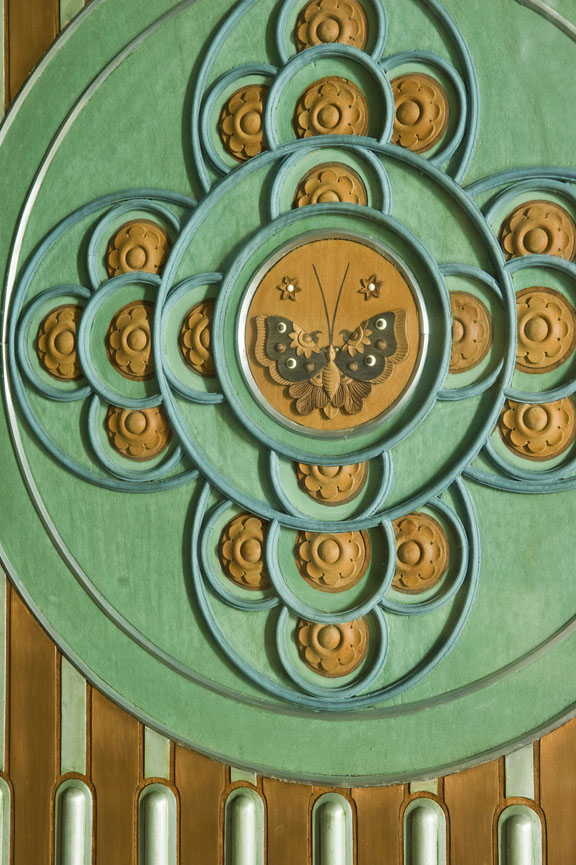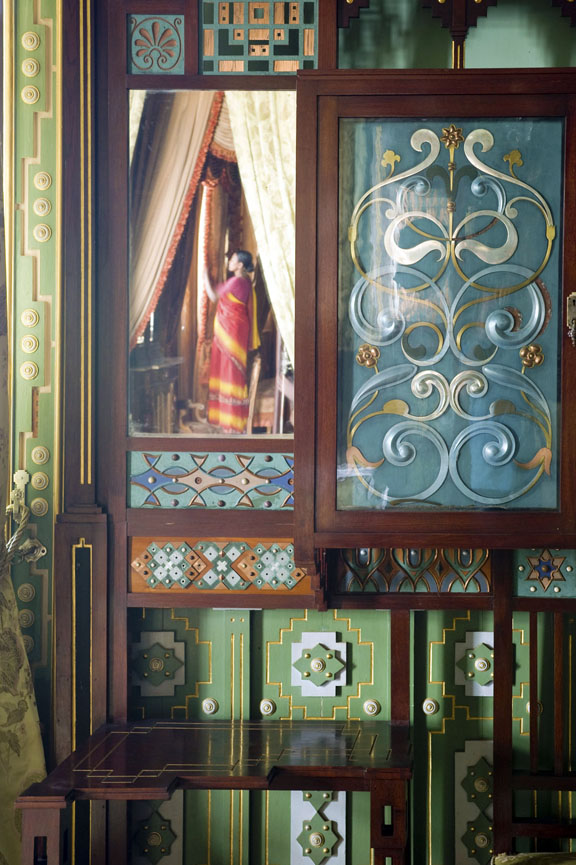A small collage of the pictures from my recent trip to Mauritius…..
Category: Travel
This is a series extracted from MSN and a few other websites on what could be the few destinations on the planet, which, are yet to be explored and tested!!! From Australia to Mongolia and from Bolivia to Greenland, this would present a list of destinations which can be called the world’s last remaining adventures!! Sit back and enjoy!!
The forest of undiscovered creatures
 Aprada tepui, a remote rainforest mesa on the border of Venezuela and Guyana, is so little explored that in 2006 researchers discovered a cave – Cueva del Fantasma – large enough for a helicopter to fly into it. The area is also home to rare poison dart frogs, carnivorous plants and hundreds of other undiscovered species – and who knows, maybe a cave that can accommodate a jumbo jet.
Aprada tepui, a remote rainforest mesa on the border of Venezuela and Guyana, is so little explored that in 2006 researchers discovered a cave – Cueva del Fantasma – large enough for a helicopter to fly into it. The area is also home to rare poison dart frogs, carnivorous plants and hundreds of other undiscovered species – and who knows, maybe a cave that can accommodate a jumbo jet.
For more details click here to learn more about Aprada tepui
The territory of the sea gypsies
Most of the beaches in the 800-island Mergui Archipelago, Burma, have never been visited by anyone but the native sea gypsies. That  means endless coastlines of virgin scuba diving. The problem is getting there — between 1940 and 1997, Mergui was off limits to outsiders, but now the Burmese government allows limited access to dive boats, though they strictly control their movements.
means endless coastlines of virgin scuba diving. The problem is getting there — between 1940 and 1997, Mergui was off limits to outsiders, but now the Burmese government allows limited access to dive boats, though they strictly control their movements.
Click here for more details on Mergui Archipelago.
The highest unclimbed mountain
 As far as geographers can tell, the highest unclimbed mountain in the world is Gangkhar Puensum, a 7,570 metre spine of granite marking the border between Tibet and the tiny kingdom of Bhutan. Mountaineers made failed assaults on the peak in 1985 and 1986 but couldn’t knock it off. In 1998, after Bhutan blocked access to the mountain for spiritual reasons, a Chinese team tried and failed to reach the peak from the Tibetan side.
As far as geographers can tell, the highest unclimbed mountain in the world is Gangkhar Puensum, a 7,570 metre spine of granite marking the border between Tibet and the tiny kingdom of Bhutan. Mountaineers made failed assaults on the peak in 1985 and 1986 but couldn’t knock it off. In 1998, after Bhutan blocked access to the mountain for spiritual reasons, a Chinese team tried and failed to reach the peak from the Tibetan side.
Impossible terrain in the Americas
The Pan American Highway runs unbroken from Prudhoe Bay, Alaska, to the farthest tip of Argentina… except for a 54-mile break  between Panama and Colombia known as the Darien Gap. Home to two national parks, this swampy, mountainous terrain has only been crossed by a handful of off road expedition vehicles and a small cohort of hikers. No wonder – impossible terrain and roaming bandits and armed guerillas have kept this one of the least visited spots on Earth.
between Panama and Colombia known as the Darien Gap. Home to two national parks, this swampy, mountainous terrain has only been crossed by a handful of off road expedition vehicles and a small cohort of hikers. No wonder – impossible terrain and roaming bandits and armed guerillas have kept this one of the least visited spots on Earth.
Click here for more information.
The Yucatan’s hidden underwater world
 Mexico’s Yucatan is dotted with cenotes – underground lagoons; some 500km of watery passageways have been documented crisscrossing the peninsula. Scientists and explorers, however, think there could be countless miles of underwater rivers and passages still to be discovered. Several local groups, including the Global Underwater Explorers, discover new caves every year.
Mexico’s Yucatan is dotted with cenotes – underground lagoons; some 500km of watery passageways have been documented crisscrossing the peninsula. Scientists and explorers, however, think there could be countless miles of underwater rivers and passages still to be discovered. Several local groups, including the Global Underwater Explorers, discover new caves every year.
For more information click this link here.
The pristine African rainforest
There is no road access to Ivindo national park, in Gabon, one of the last intact and unexplored rainforests in Africa. In 2001, during his megatransect of the continent, the biologist Michael Fay discovered the Langoue Bai, deep within Ivindo, a glade where elusive forest elephants, buffalos, gorillas and chimps romp with little fear of humans.
Click here for more information.
The unscaled Tibetan mountain range
 For several years, the Japanese mountaineer Tamotsu Nakamura has catalogued the unclimbed mountains in the eastern Tibetan Nyainqentanglha range, which is tightly controlled by the Chinese government. His photos of the unclimbed peaks have the mountaineering world drooling. According to one estimate the area has 164 mountains over 6,000 metres, with 159 yet to be summited.
For several years, the Japanese mountaineer Tamotsu Nakamura has catalogued the unclimbed mountains in the eastern Tibetan Nyainqentanglha range, which is tightly controlled by the Chinese government. His photos of the unclimbed peaks have the mountaineering world drooling. According to one estimate the area has 164 mountains over 6,000 metres, with 159 yet to be summited.
Click here for more information.
The impenetrable animal refuge
This vast area of thorn and scrubland on the border of Brazil, Argentina, Paraguay and Bolivia has remained little developed because of its brutal climate. In particular, the three million hectare Kaa-Iya del Gran Chaco national park, the largest  in Bolivia, is an impenetrable thicket that protects some of the continent’s last remaining jaguars, pumas, maned wolves, and at least one indigenous tribe that has no contact with the outside world.
in Bolivia, is an impenetrable thicket that protects some of the continent’s last remaining jaguars, pumas, maned wolves, and at least one indigenous tribe that has no contact with the outside world.
Click here for further information on Kaa-Iya del Gran Chaco National Park, Bolivia.
The unmapped Russian peninsula
 Though the Russian Kamchatka Peninsula has exploded in popularity with adventure travellers, especially fly fishers, over the past decade, most of the area’s rivers and streams have yet to be mapped. Last summer, a team of six veteran kayakers set out to descend as much virgin whitewater as they could as part of the Kamchatka Project expedition, which was intended to raise conservation awareness and perhaps spark a kayaking industry.
Though the Russian Kamchatka Peninsula has exploded in popularity with adventure travellers, especially fly fishers, over the past decade, most of the area’s rivers and streams have yet to be mapped. Last summer, a team of six veteran kayakers set out to descend as much virgin whitewater as they could as part of the Kamchatka Project expedition, which was intended to raise conservation awareness and perhaps spark a kayaking industry.
Click here for more information.
The untouched ecosystem
The Mozambiquan region of Mt. Mabu is so remote that scientists only discovered it when they noticed a blank spot on Google Earth in  2005. When they finally trudged into this mountainous rainforest, three years later, they discovered a whole ecosystem untouched by man, including new species of snakes, butterflies and a chameleon. Now scientists are wishing they could scrub it off the map again to keep the treasure trove safe from local loggers.
2005. When they finally trudged into this mountainous rainforest, three years later, they discovered a whole ecosystem untouched by man, including new species of snakes, butterflies and a chameleon. Now scientists are wishing they could scrub it off the map again to keep the treasure trove safe from local loggers.
Click here for further information on Mt. Mabu, Mozambique.
Raft the unmapped tributaries of the Nile
 You’d think that, after 5,000 years, we’d know something about the Nile and its tributaries, but the Blue Nile river, originating in Ethiopia and running through the Sudan before connecting with the main event at Khartoum, was only fully navigated for the first time in 2004 when the filmmaker Gordon Brown and Pasquale Scaturro made it from Ethiopia to Alexandria in Egypt. The river’s countless tributaries and rugged terrain continue to stymie explorers and cartographers.
You’d think that, after 5,000 years, we’d know something about the Nile and its tributaries, but the Blue Nile river, originating in Ethiopia and running through the Sudan before connecting with the main event at Khartoum, was only fully navigated for the first time in 2004 when the filmmaker Gordon Brown and Pasquale Scaturro made it from Ethiopia to Alexandria in Egypt. The river’s countless tributaries and rugged terrain continue to stymie explorers and cartographers.
Click here for further information.
There are literally thousands of unclimbed and unskied peaks in British Columbia, but some of the most spectacular are in the Coast Mountains, including the 2,400-metre Spectrum Range and Rainbow Ranges. Skiers with the stamina and ambition to make the trek into the mountains can make genuine first climbing ascents and first skiing descents to their hearts’ content.
Click here for more information.
Kite Skiing Greenland
 The vast, unforgiving icecap covering the interior of Greenland has been an exploration blank spot, with most expeditions keeping close to the coast. But in the past decade explorers have begun venturing further and further into the interior, often by kite-ski. In June last year, the Greenland Legacy Crossing set a world record when two kite-skiers travelled an astounding 370 miles in one day in their sleds.
The vast, unforgiving icecap covering the interior of Greenland has been an exploration blank spot, with most expeditions keeping close to the coast. But in the past decade explorers have begun venturing further and further into the interior, often by kite-ski. In June last year, the Greenland Legacy Crossing set a world record when two kite-skiers travelled an astounding 370 miles in one day in their sleds.
Click here for further information on kite skiing in Greenland.
The wild, unfished tributaries of Mongolia
Taimen are the largest salmonid – think trout and salmon – in the world, with the aggressive toothy fish reachi ng 100 to 150 centimetres. Mongolia is one of the last refuges of the sport species, and adventurous anglers, often using ground squirrels as bait, are still finding untouched fishing tributaries off the Eg and Urr rivers in the country’s north.
ng 100 to 150 centimetres. Mongolia is one of the last refuges of the sport species, and adventurous anglers, often using ground squirrels as bait, are still finding untouched fishing tributaries off the Eg and Urr rivers in the country’s north.
For more information on Eg and Urr Rivers in Mongolia, click here.
The 5,000-metre-deep Australian canyon
 Off the Bonney Coast of Australia lies an underwater canyon system so deep and so vast it is only now being mapped. The maze, which reaches depths of 5,000 metres, has turned out to be a biological hotspot, with the specially equipped Southern Surveyor research vessel pulling up undiscovered species of fish and plankton almost every time it voyages out.
Off the Bonney Coast of Australia lies an underwater canyon system so deep and so vast it is only now being mapped. The maze, which reaches depths of 5,000 metres, has turned out to be a biological hotspot, with the specially equipped Southern Surveyor research vessel pulling up undiscovered species of fish and plankton almost every time it voyages out.
Click here for more information the Bonney Coast Under Water Canyon.
There are places on this planet that are stranger than the most alien landscapes we have ever imagined. Places that make your skin crawl. Places that induce heavy breathing and paranoia, before anything has even happened. We walk the dark, dusty steps of old castles and houses. We roam the halls of asylums and tunnels, hoping to glimpse something otherworldly. But sometimes, we wish we wouldn’t. Sometimes, our curiosity gets the better of us in the beginning, and is then squashed by a feeling that no human ever wants to be familiar with: absolute terror.
We hear screams in the night, footsteps in the hall. We see shadows flit by, and fog taking the shape of something eerily familiar. We breathe, we pray, and step lightly. We scream, we curse, and we sprint. Some encounters are mysterious, others violent, all terrifying. Why do we insist on investigating places such as these? Mere curiosity only gets us so far, and then we need a driving force embedded much deeper into our psyche in order to power on. Would you spend the night alone in these places?
Riddle House, Palm Beach County, Florida, USA
The History
The Riddle House in Palm Beach County, Florida, was originally a funeral parlor. The Victorian house was dismantled and rebuilt in Yesteryear Village at the South Florida fair grounds. In the 1920’s the house became privately owned by Karl Riddle.
The Terror
Joseph, one of Riddle’s former employees, committed suicide by hanging himself in the attic of the house. Joseph, for whatever reason, hated men, and displays this hatred by attacking men who enter the attic. One man had a lid flung at his head, and men are now no longer allowed in the attic. Other places in the house are haunted as well, with furniture being frequently moved.
Hell Town, Summit County, Ohio, USA
The History
The Northern part of Summit County in Ohio is known by the eerily blunt moniker, Helltown. In the 70’s, Boston Township was the site of a government buyout, and subsequent mass eviction of citizens. The houses were intended to be torn down and the land used for a national park, but the plans never quite manifested. Legends spawned wildly, and who can blame the legend mongers? Driving through the dark, wooded landscape was enough to give you chills even when it was populated, let alone when you have to drive by boarded up houses standing next to the burnt out hulks of others (the local fire department used some buildings for practice).
The Terror
Whether based on a kernel of truth or cooked up in the heads of creative visitors, the persistent legends of Helltown add to the creep factor. The steep Stanford Road drop off, immediately followed by a dead end, is aptly named The End of the World. If you get stuck at this dead end for too long, according to ghost story enthusiasts, you may meet your end at the hands of many members of the endless parade of freaks patrolling the woods. Satanists, Ku Klux Klan members, an escaped mental patient, an abnormally large snake, and mutants caused by an alleged chemical spill proudly march in this parade. And if you stray from the roads, you may find Boston Cemetery, home to a ghostly man, grave robbers and, the quirkiest of all, a moving tree.
Stull Cemetery, Bumfuck, Douglas County, Kansas, USA
The History
Stull, Kansas, is a tiny, unincorporated town in Bumfuck, Nowhere- er, pardon, Douglas County. Ten miles west of Lawrence and thirteen miles east of Topeka puts it far from anything resembling a large population center. The population of Stull is approximately 20 people. But, don’t let the deceptively quaint village fool you. A darker side lurks behind the bushes and in the shadows.
The Terror
In the early 20th century, two tragedies rocked the tiny settlement (please observe, these are not legend or folklore, but fact). First, a father finished burning a farm field, only to find the charred corpse of his young son in the aftermath. The second incident to occur was a man went missing, and was later found hanged from a tree. As far as legends go, the infamous cemetery is where you can find your fill of supernatural lore. The book Weird US has this to say on Stull Cemetery:
“There are graveyards across America that go beyond merely being haunted and enter into the realm of the diabolical. They are places so terrifying that they say the devil himself holds courts with his worshippers there. The cemetery on Emmanuel Hill in Stull, Kansas, is one of these places.”
Rumors exist stating that Stull Cemetery is one of the 7 gateways to Hell. While the old church is now demolished, many attempt to sneak in at night for a peek at the unsavory goings-on. But be warned, the police patrol heavily, especially on Halloween and the spring equinox. The place is supposed to be so unholy, in fact, that some claim Pope John Paul II refused to allow his plane to fly over eastern Kansas, on his way to an appearance in Colorado. The validity of this last claim is up for debate, but none can deny that legends or not, Stull Cemetery is a terrifying place to be.
The Ridges, Athens, Ohio, USA
The History
Originally known as the Athens Lunatic Asylum, The Ridges was renamed after the state of Ohio acquired the property. The hospital saw hundreds of lobotomies, and often declared masturbation and epilepsy to be the causes of insanity in patients.
The Terror
Athens, Ohio, is listed as the 13th most haunted place in the world, as per the British Society for Psychical Research. The nearby Ohio University (which currently owns most of the property on which the Ridges is located) is said to be heavily haunted. The notorious rapist with Dissociative Identity Disorder, Billy Milligan, was housed at the facility for years. The most famous story, however is that of a 54 year old female patient who ran away and was missing for 6 weeks. She was found dead in an unused ward. She had taken off all of her clothes, neatly folded them, and laid down on the cold concrete where she subsequently died. Through a combination of decomposition and sun exposure, her corpse left a permanent stain on the floor, which is still visible today. Her spirit now haunts the abandoned ward.
Humberstone and La Noria, Chile
The History
These two abandoned mining towns in Chile were recently featured on an episode of the SyFy Channel’s show, Destination Truth. In 1872, the town was founded as a saltpeter mine, and business boomed. However, after several heavy blows (including the Great Depression), the business declined and then collapsed in 1958, and the town of Humberstone and it’s surrounding towns were abandoned by 1960. Treatment of workers in both towns bordered on slavery, and now the towns are left standing derelict.
The Terror
It is rumored that the dead of the La Noria cemetery rise at night and walk around the town, and ghostly images frequently show up in photographs in Humberstone. These towns are so terrifying, the residents of nearby Iquique refuse to enter them. The former residents never left, and can be seen walking around, and children have been heard playing. The cemetery of La Noria, regardless of whether its occupants actually walk at night, contains opened graves where the bodies are fully exposed, leaving you to wonder why. Is it ghosts, or is it grave robbers? As if either prospect is very appealing.
Full episodes of Destination Truth, including the episode featuring Humberstone and La Noria, can be seen here.
Byberry Mental Asylum, Philladelphia, USA
The History
The Philadelphia State Hospital at Byberry, or known simply as Byberry, was the poster image for patient maltreatment. The hospital, in its most popular form, was founded in 1907, and known as the Byberry Mental Hospital. It exceeded its patient limit quickly, maxing out at over 7,000 in 1960. It housed everything from the mentally challenged to the criminally insane. Due to its atrocious conditions, and the sub-human treatment of its patients, the hospital was closed and abandoned in 1990. It had since become a nuisance for the neighborhood, as it was a breeding ground for vandals, arsonists, Satanists, and urban explorers. It was demolished in 2006, in spite of the fear of spreading asbestos, (which is what kept it standing for 16 years).
The Terror
The terrifying aspect of this location isn’t so much it’s hauntings or the unsavory characters that lurked after dark (although you would have been wise to be wary of both while exploring the building). The terror here comes from the facts of the how the hospital was run. Human excrement lined the hallways, which were also where many patients slept. The staff was abusive, and frequently exploited and harassed patients. One patient had a tooth pulled without Novocaine, while another killed and dismembered a female patient. Although the killer, Charles Gable, was never found, the victim’s body was found strewn across the property. Her teeth were found being played with by another patient. Even as the hospital was in the process of closing, two released patients were found dead in the Delaware River, two successive days after their release. Perhaps that gate in Stull Cemetery opens here.
Leap Castle, Ireland
The History
While this Irish castle is perhaps the most popular location featured on the list, it is worth recapping the long and often gruesome history. Although it was built by the O’Bannons in the late 15th century, the castle was taken over by the ruling O’Carrolls, to whom the O’Bannons were subject. After the death of Mulrooney O’Carroll, a fierce rivalry erupted, culminating in two brothers struggling for control. One of the brothers, a priest, was brutally murdered in his own chapel, in front of the family, by the other brother. This chapel is now know as the Bloody Chapel, for obvious reasons. Many people were held prisoner and even executed at the castle.
The Terror
The castle is rumored to be haunted by a vast number of spirits, including a violent, hunched beast known only as the Elemental. It is most recognizable by the accompanying smell of rotting flesh and sulphur. While renovating the castle, workers discover an oubliette, which is a dungeon accessible only through a ceiling hatch, into which prisoners are thrown, then forgotten and left to die. This particular oubliette contained three cartloads of human remains, and was filled with spikes to impale those thrown into it’s depths.
Shades of Death Road, New Jersey, USA
The History
This New Jersey road winds through 7 miles of countryside, and along that stretch it gives us no definitive clues as to the origin of its eerie name (for those wondering, Shades of Death is not a nickname given by locals, but is in fact the road’s official moniker). While the explanation for this highly unusual name has been lost, many theories abound. Some say that murderous highwaymen would rob and kill those along the road. Others say the reason was because of violent retaliations by the locals against the very same highwaymen, resulting in their lynched corpses being hung up as a warning. Some attribute it to three murders that occurred in the 20’s and 30’s. The first murder saw a robber beating his victim over the head with a tire iron, the second saw a woman decapitate her husband and bury the head and body on separate sides of the road, and the third consisted of poor Bill Cummins being shot and buried in a mud pile. Some attribute it to massive amounts of fatal car crashes, while others consider it the fault of viscous wildcats from the nearby Bear Swamp. The most likely explanation, however, is that malaria-bearing mosquitos terrorized the locals year to year, and the remoteness of the area prevented good medical attention from being prominent in the area. This is supported by the fact that, in 1884, most of the swamps in the area were drained.
The Terror
Gruesome history and spooky name aside, you have much to fear along this byway. South of the I-80 overpass lies an officially unnamed lake, that most will tell you is called Ghost Lake. This lake is frequently the home of specter-like vapors, and the sky is supposed to be unusually bright, no matter what time of night you are there. As per the name, ghosts of the highwaymens victims roam the area, and they are most frequent in the abandoned cabin across the lake. The dead-end road known as Lenape Lane is home to thick fogs and apparitions, you may be chased off the road by a white light. I’ll let Wikipedia detail the most disturbing aspect of the road:
“One day during the 1990s, some visitors found hundreds of Polaroid photographs scattered in woods just off the road. They took some and shared them with Weird NJ, which published a few as samples. Most of the disturbing images showed a television changing channels, others showed a woman or women, blurred and somewhat difficult to identify, lying on some sort of metal object, conscious but not smiling. Local police began an investigation after the magazine ran an item with the photos, but the remainder disappeared shortly afterwards.”
Tuol Sleng Genocide Museum, Phnom Penh, Cambodia
The History
Welcome to Phnom Penh, Cambodia, home of the Tuol Sleng Genocide Museum. This former high school was converted, in 1975, to Security Prison 21 by the Khmer Rouge. The prison was used as a base to torture and murder prisoners. Most of the prisoners were former soldiers and government officials from the Lon Nol regime. However, the Khmer Rouge leaders paranoia soon caught up with them, and they began shipping people from their own ranks to the prison. Many prisoners were tortured and tricked into naming their family and associates, who were them also arrested, tortured and murdered.
The Terror
The ghosts of the estimated 17,000 victims of Tuol Sleng continue to roam the halls, and odd happenings around the place are often attributed to them: and it isn’t hard to see why. Most were forced to confess to crimes they didn’t actually commit. Although most victims were Cambodians, many foreigners fell victim to the death machine, including Americans, French, a New Zealander, a Briton, Australians, Arabs, Indians, Pakistanis and Vietnamese. Only 12 people are thought to have survived. To close the entry on this sad history, I’ll leave you with the actual security regulations, the ten rules all prisoners had to abide by. All imperfect grammar is said in context due to poor translation.
1. You must answer accordingly to my question. Don’t turn them away.
2. Don’t try to hide the facts by making pretexts this and that, you are strictly prohibited to contest me.
3. Don’t be a fool for you are a chap who dare to thwart the revolution.
4. You must immediately answer my questions without wasting time to reflect.
5. Don’t tell me either about your immoralities or the essence of the revolution.
6. While getting lashes or electrification you must not cry at all.
7. Do nothing, sit still and wait for my orders. If there is no order, keep quiet. When I ask you to do something, you must do it right away without protesting.
8. Don’t make pretext about Kampuchea Krom in order to hide your secret or traitor.
9. If you don’t follow all the above rules, you shall get many many lashes of electric wire.
10.If you disobey any point of my regulations you shall get either ten lashes or five shocks of electric discharge.
The Mines of Paris, France
The History
The seemingly infinite tunnels that run below the streets of Paris should not be confused with the Catacombs of Paris, the famous underground ossuary, although the mines are also mistakenly referred to as the catacombs. Exploring the mines is illegal, and penalties include heavy fines. The mines were used to dig out minerals from Paris’ varied sediment (the location where Paris is was submerged for millions of years), and the tunnels are what got left behind.
The Terror
The mines are now unkempt, unpatrolled and unsafe. As far as legends go, ancient cults and creatures patrol the depths. Spirits dwell in the infinite shadows, and if one wanders deep enough, and survives, they may even enter Hades itself. As far as reality goes, those legends can take a back seat. The tunnels stretch for close to 600 kilometers throughout the Parisian underground, and most of them are unmapped. Saying it is easy to get lost is an understatement. It is nearly impossible not to get lost. Many parts of the catacombs are hundreds of feet below street level. Some hallways are flooded, or are so narrow you have to crawl through them. There are holes that drop hundreds of feet, and manholes that are unreachable, luring unwary urban explorers in with false promises of freedom. The infinite underground maze absorbs sound, mutes it, making it unlikely you will hear somebody yelling for help, even if they are not far away. Or, worse yet, making it unlikely somebody will hear you. Thousands of human bones litter the tunnels, due to overcrowding in many of Paris’ cemeteries. Weird paintings adorn the walls. Are they ancient? Are they new? Are they warnings? Or pleas for help? If you have claustrophobia, you will want to avoid the mines at all costs. If you don’t have claustrophobia, you probably will after a trip through the mines. Bring plenty of batteries, backup flashlights, clean water, a friend, and say a prayer before entering the mines of Paris. You will need them all.
Heritage Conservation Committee under HUDA was formed by state government in 1981 to retain architectural, historical and social value of buildings. Hyderabad Urban Development Authority has listed almost 160 buildings in Hyderabad city as heritage structures. Almost 70% of heritage buildings are in private hands. Heritage structures include buildings, monuments, rock structures etc.
By notifying such structures, Heritage Conservation Committee in collaboration with INTACH works to retain their architectural, historical and social importance and tries to convince the owners not to destroy the listed heritage structures lured by the commercial potential of their properties. The buildings are graded as Grade I, Grade II & Grade III. However, experts feel due to lack of support from the state government it has become difficult to preserve the status of these buildings. Various buildings such as Ravi Bar, Adil Alam Mansion, Central Building Division & Devdi Ranachand – Ahotichand have been demolished but the names of these buildings are still being retained in the list.
Following are the list of the heritage buildings in Hyderabad. This list is constantly upgraded by HUDA. The buildings proposed by HUDA are to be approved by the state government.
- 1. Adil Alam Mansion, Nampally
- 2. Afzal Gunj Mosque
- 2. Air & Land Warfare Building, Secunderabad
- 3. Aiwan-e-Ali
- 4. Aliabad Sarai
- 5. Ali Manzil, Public Garden
- 6. Allahuddins Building, Begumpet
- 7. Amberpet Burj, Amberpet
- 8. Ameen Manzil, Saidabad
- 9. State Central Library, Afzal Gunj
- 10. Andhra Patrika Building, Basheerbagh
- 11. Andhra Pradesh High Court
- 12. State Archaeological Museum
- 13. Asmangarh Palace
- 14. Asman Mahal, Lakdi-ka-pool
- 15. Azha Khana-e-Zehra
- 16. Parsi Dharamshala
- 17. Baradari of Nawab Khursheed Jah Bahadur
- 18. Baitul Ashraf, near Niloufar Hospital
- 19. Baquer Bagh, Saidabad
- 20. Bella Vista (Administrative Staff College of India)
- 22. Bhagawandas Garden Pavilion , Karawan
- 23. Chowmahalla Palace
- 24. City College
- 25. Secunderabad Clock Tower
- 26. Clock Tower, Sultan Bazar
- 28. Clock Tower – Fateh Maidan
- 29. Clock Tower – Mahboob Chowk
- 30. Dargah Hazrath Shajauddin
- 31. Dargah Nooruddin Shah Ancient Gateway, Kukatpally
- 32. Dargah Syed Shah Mir Mahmood Wali
- 33. Dargah Yousufain
- 34. Darush Shifa & Mosque
- 35. Devdi Akram Ali Khan, Gate Portion
- 36. Devdi Asman Jah
- 37. Devdi Bansilal, Begum Bazar
- 38. Devdi Iqbal-ud-Doula (Shah Gunj)
- 39. Devdi Imaad Jung Bahadur, Gunfoundry
- 40. Devdi Nazir Nawaz Jung (Chiran Fort Club)
- 41. Devdi Mehdi Nawaz Jung, Banjara Hills
- 42. Devdi Nawab Shamsheer Jung, Yakutpura
- 43. Devdi Maharaja Kishan Pershad Bahadur, Shalibanda Road
- 44. Dewan Devdi – Gate Portion
- 45 lines. Dhanrajgirji Complex
- 46. Directorate of Industries, Chirag Ali Lane
- 47. Errum Manzil
- 48. Falaknuma Palace
- 49. Gandhi Medical College, Basheerbagh
- 50. Golden Threshold, Nampally Station Road
- 51. Hyderabad Public School
- 52. Jama Masjid, Charminar
- 53. Jawahar Bal Bhavan, Public Garden
- 54. Jhamsingh Temple – Gate Portion
- 55. Jubilee Hall
- 56. Kaman Chatta Bazar
- 57. King Koti Complex: a) Hospital (old) b) Usman Mansion c) Nazri Bagh
- 58. Residency Complex (Women’s College, Koti)
- 59. Kishan Bagh Temple, Bahadurpura
- 60. Nizamia Observatory, Panjagutta
- 61 a) Charkaman; b) Machlikaman c) Kalikaman d) Sher-e-Batil-Ki-Kaman
- 62. Lakshmi Paper Mart’s Building, James Street
- 63. Maharaja Chandulal Temple, Alwal
- 64. Mahboob Chowk Mosque
- 65. Mahboob Mansion, Malakpet
- 66. a) Malwala Palace – Main Courtyard, Secondary Courtyard & Residential quarters:Charminar
- 67. Manjhli Begum Ki Haveli, Shali Banda road
- 68. Mushk Mahal, Attapur
- 69. Moghulpura Tombs
- 70. Mohanlal Malani’s residence, James Street
- 71. Monty’s Hotel, Parklane, Secunderabad
- 72. Mosque – near Jhamsingh Temple
- 73. Moazzam Jahi Market
- 74. Nanu Bhai G. Shah’s Building, Sultan Bazar
- 75. Nizam Club, Saifabad
- 76. Nizam College
- 77. Osmania Arts College
- 78. Osmania General Hospital
- 79. Lady Hydri Club, Basheerbagh
- 80. Paigah Palace (Vikhar-ul-Umra Palace)
- 81. Parsi Fire Temple, MG Road, Secunderabad
- 82. Prakash Building, Shivajinagar
- 83. Princess Esin Women’s Educational Centre, Purani Haveli
- 84. Puranapul bridge
- 85. Purani Haveli Complex
- 86. Qila Kohna & Mosque, Saroornagar
- 87. Raja Bhagwandas Building, Sultan Bazar
- 88. Shahi Jilu Khana, Gate Portion
- 89. Shahi Khilwat Khana
- 90. Sitaram Bagh Temple
- 91. Spanish Mosque, Begumpet
- 92. St. George’s Church, Abids
- 93. St. Mary’s Church, Secunderabad
- 94. St. John’s Church, East Marredpally
- 95. St. Joseph’s Cathedral, Gunfoundry
- 96. Gate Portion – Shamraj Bahadur
- 97. Vikhar Manzil
- 98. Victoria Memorial Orphanage, Saroornagar
- 99. Victoria Maternity Hospital, Asaf Jahi Road
- 100. Government Unani Hospital, Charminar
- 101. Vilayath Manzil, Begumpet Railway Station
- 102. Homeopathic Hospital
- 103. Tomb Fakhr-ul-Mulk, Sanathnagar Road
- 104. Vijay Marie Church, AC Guards
- 105. Puranmal Samadhi
- 106. Ritz Hotel (Hill Fort Palace), Adarshnagar
- 107. D. Lakshmaiah’s residence, Monda Market
- 108. D. Pentaiah’s residence, Monda Market
- 109. Sardar Mahal
- 110. Raza Ali Bunglow, Near Fever Hospital
- 111. Façade – Baitul Ghous, Moazzam Jahi Market
- 112. Façade – Hifazath Hussain
- 113. Goshamal Baradari
- 114. Prem Chand’s residence, Sardar Patel Road
- 115. Shyam Rao Chungi’s residence, Padmarao Nagar
- 116. Dilkusha Guest House, Raj Bhavan Road
- 117. College of Nursing, Raj Bhavan Road
- 118. Yousuf Tekhri
- 119. Khusroo Manzil, A.C.Guards
- 120. Devdi Ranachand – Ahotichand, Mehdipatnam (Deleted)
- 121. Panj Mahalla, Lingampally
- 122. Parwarish Bagh, Lingampally
- 123. Central Bank Building, Koti
- 124. Mini Bal Bhavan, Public Garden
- 125. Taj Mahal hotel (Old Block), Abids
- 126. Ravi Bar, Troop Bazar
- 127. Hyderabad Central Building Division’s office, Moazzam Jahi Market
- 128. Roshan Mahal
- 129. Central Co-operative Training College, Nizam College Road
- 130. Mahboobia Girls High School & Junior College Madraasa-E-Aliya, Gunfoundry
- 131. Reddy Hostel, Abids
- 132. Mahal Wanaparthi
- 133. A. Majeed Khan’s residence, Purani Haveli
- 134. Old M.C.H. Office, Darush Shifa
- 135. Greenlands Guest House, Begumpet
- 136. Raj Bhavan Old Building
- 137. St. George’s Grammar School Complex, Abids
- 138. Old Jail Complex, Monda Market Road
- 139. Wesley Church Complex, Secunderabad
- 140. Nampally Sarai, Nampally
- 141. Bhoiguda Kaman, Mangalhaat
- 142. IAS Officers Association, Greenlands, Begumpet
- 143. St. Mary’s Presbytery (St. Anns School), Secunderabad
- 144. Mr. Krishna Reddy’s Building, Mehdipatnam
In addition to various buildings, INTACH has classified various rock formation under heritage category. These are:
- 1. “Bear’s Nose” inside Shilparamam, Madhapur
- 2. “Cliff Rock”, Jubilee Hills
- 3. Hillocks around Durgam Cheruvu Lake, Jubilee Hills
- 4. “Monster Rock” near Film Nagar, Jubilee Hills
- 5. “Obelisk”, Jubilee Hills
- 6. “Mushroom Rock” inside the University of Hyderabad Campus
- 7. Rock Park, on Old Bombay Road near Dargah Hussain Shah Wali
- 8. Sentinel Rock, near Moula-Ali
- 9. Rocks at Maula Ali’s Dargah, Moula-Ali
- 10. “Toadstool” next to Blue Cross, Jubilee Hills
I have posted the pictures for few buildings and for a few I could not take any pictures or get any pictures on the web. You will have to find them for yourselves!!!
Perhaps the last in the series on the Palaces of Hyderabad is the beautiful Vikhar Manzil.
Vikhar Manzil built by the Prime Minister of Hyderabad state, Sir Vicar-ul-Umra. He was amazed by the Hussain Sagar by its breathtaking view of the lake, and thus built this palace in Indo-European architectural style around 1900. Though Sir Vicar-ul-Umra did not live at this palace, his son Nawab Vilayat Jung Wali-ud-Daula stayed here.
A century after it was built, the Vikhar Manzil continues to provide an amazing view, but of vastly shrunken water spread.
THE BEAUTY and vastness of the Hussain Sagar Lake, built on a tributary of the river Musi, in 1562, about 30 years before the founding of city, is best described in history by a thug on a “professional” recce of the city in the early 19th Century.
Odd it may look, but the thug, entering Hyderabad through Alwal village, reached the Tank Bund from where he saw the lake, “whose surface was curled into a thousand waves, whose crests as they broke, sparkled like diamonds and threw their spray into our faces as they dashed against the stonework of the embankment. We stood a long time gazing upon the beautiful prospect, so new to us all and wondering whether the sea…. could be anything like what was before us.”
That was Ameer Ali, who, overwhelmed by the lake, narrated his story in Confessions of a Thug, by Meadows Taylor and quoted by Narendra Luther in his book on Mohammed Quli Qutb Shah.
A century after that infamous visit, it was the turn of Sir Vikhar-ul-Omra, Prime Minister to the sixth Nizam, to get charmed by the lake. Attending the “house warming ceremony” of his trusted lieutenant, Razack Ali, who had built his modest mansion on a hillock (Razack Gadh as it came to be known then, forming the extreme corner of today’s Prakash Nagar, Begumpet) Sir Vikhar was simply swept away by the breathtaking view of the lake.
For him, on a moonlit night, the sheet of crystal clear water turning into waves, often unsettled by the wind blowing across looked like pearls dancing up and down. Too romantic to be true, but Sir Vikhar who used to call it a “pearly lake”, liked the hilltop so much that he bought the mansion and the adjoining site and built the Vikhar Manzil, in Indo-European architectural style around 1900. After all, hilltops and palaces by Paigahs went together, the other good examples being Falaknuma and the Asman Gadh Palace.
A century after it was built, the palace continues to provide an amazing view, but of a vastly shrunken water spread, rather a cesspool, thanks to the present day “vision, development, industry and tourism-oriented” rulers. After contemptuously allowing the lake to be polluted by industrial effluents and domestic sewage for well over three decades, the talk now is of restoring it to its original glory, with Japanese aid! The surroundings are no better with housing and commercial complexes, roads and now a string of tourist projects coming up all over.
The palace may not look extensive but has its own distinct Indo-European features. The arcaded staircase leads to a deep veranda. Climbing on to the staircase, you enter a corridor and then into a high ceiling (Madras terrace) square atrium, having stucco work on the sidewalls at the top. Two halls flank this central atrium, one believed to be a billiards room, another a drawing room. On crossing this portion you come on to the living area, a fantastic courtyard with a central fountain, surrounded by pointed arches. A foyer runs behind these arches, leading to more halls and rooms.
The hall and rooms in the front have double doors, all in Burma teak, the outer one having French style louvers and the inner one covered by glass embossed with the letters VO, (Vikhar-ul- Omra). The iron railings of the corridor too have these letters overlapping one another. Some of the halls still have Morley fans with plywood blades and bathrooms have Made-in-England fittings. Battlements decorate the parapet running through the building lending it a fort like appearance, a Paigah speciality.
The structure is strong but the general condition is not very good with the inside portion looking haunted and leakages common. “It is very difficult to maintain such a huge palace. We get it cleaned every three months “, says S. Inayat-ul-Haq, husband of Asif-un-Nissa, great grand-daughter of Sir Vikhar, who lives in the palace.
Sir Vikhar himself could not reside here but his second son, Nawab Vilayat Jung Wali-ud-Daula, (from his second wife), minister and president of the executive council stayed till he performed the marriage of his son, Capt. Mohiuddin Khan with Moinuissa Begum, daughter of Maharaja Kishen Pershad, prime minister to the Nizam. The marriage was a memorable event and the procession was one of the longest ever that straddled across Secunderabad and Hyderabad. Wali-ud-Daula then shifted to his other palace, Vilayat Manzil (now Country Club) also at Begumpet.
The Vikhar Manzil listed for its architectural features, is known for a running feud between the descendants of Nawab Wali-ud-Daula and those of his eldest step-brother, Nawab Sultan-ul-Mulk, the son of Jahandar-un-Nissa, or Lady Vikhar as she was popular then and sister of the Sixth Nizam, Mir Mahbub Ali Khan. Haq says the feud should have ended with the Sixth Nizam issuing a farman restoring the palace to Nawab Wali-ud-Daula for since then his family was in continuous occupation till date, except for some years in 1980s when it was rented out to the Ranga Reddy Collectorate and then to the District Court.
“The palace had a vast open area so much so that you could see it from the Airport Road,” recalls Haq. Much of this open area was sold to the Government, for a pittance, Rs. 1,20,000 for the `Garib Nagar’ as Prakash Nagar (now of course a semi-posh colony) was called in the 1950s. A major part of the remaining area has been encroached with the Municipal authorities turning a blind eye. In fact the palace is known for all that has gone wrong with urban planning and heritage conservation. Unauthorised constructions continue to come up unabatedly besieging the heritage building, much against heritage regulations, four years after the issue made the MCH Commissioner appear in the High Court of Andhra Pradesh. It prompted the Commissioner to “reform” the Town Planning department suspending three and transferring 40 employees. “We are helpless. After the controversy four years ago and some dramatic action by authorities, it is back to square one,” says Haq. “A better part of my life is gone in making rounds of the offices and courts, fighting encroachers.”
Tenth in the series of the Palaces of Hyderabad is the glorious and one of the few wooden palaces in Hyderabad… The Malwala Palace!!
Malwala Palace is a palace built in 1845 located in Hyderabad, India. It is close to the historic Charminar. It was constructed in Mughal and Rajasthani style and in Hyderabadi courtyard style, is known for its richly carved wooden pavilion. Barring the grand gateway, the palace complex has been reduced to rubble.
The Malwala Palace is one of the few surviving wooden palaces of Hyderabad built in late Mughal and Rajasthani style. It was built by an ancestor of the Malwala family, Sagar Mall, who had accompanied the first Nizam to Hyderabad in 1724. Sagar Mall became custodian of the revenue (Mall) records of the state. This function was passed down to his descendants hereditarily. Thus the family acquired the name Malwala.
The Malwala Palace is located along the road leading east from the Charminar. The complex has three components: the double storeyed large residential quarters arranged around several smaller inner courtyards; the road side block with a double height semicircular gateway flanked by a pedimented side wing with Corinthian columns in European style; and finally the grand inner court with a fountain in the center surrounded by wooden pavilions on two sides and overhanging wooden balconies with intricate on the other two sides.
Malwala Palace is unique in its extensive use of woodwork and as a specimen of a typical Hyderabad courtyard house. This is one of the important palaces belonging to Hyderabad’s erstwhile nobles
The palace belongs to a noble family, the Malwala or the custodians of the Revenue Records (Daftar -i- Mal) of the erstwhile Hyderabad State. Built in the early 18th century, this was one of the very few palaces of Hyderabad built in the Mughal and Rajasthani Styles of Architecture.
It was an exquisite Diwan Khana made of huge Arches in lacquered wood and beautifully painted with vegetable dyes and two galleries about 80 Mtrs in length flanking the Diwan Khana on each side. The galleries housed the most priceless collection of antique Indian art and artifacts. Another lesser known fact about the Palace was its legendary library, which boasted of a collection of rare books and manuscripts from the 10th century A.D.
Tragedy struck the Malwala Palace, a protected heritage building, having rare wooden pavilion considered the “bride” among the garland of palaces around Charminar when the major portion as important as the “heart” was reduced to rubble on a Monday in 2000.
For conservationists, the demolition, meticulously planned and executed clandestinely by real estate developers allegedly in connivance with a section of the owners of the palace and politicians, was “outrageous”. Just when they thought the heritage regulation would ensure protection deterring the owners and their heirs from pulling down the building, it proved otherwise.
The threat of demolition had been looming large over the palace for over a year now. Another section of heirs keen on protecting the palace had apprehended knocking down of the building by “vested interests” for its real estate value and rich Rangoon teak rafters. These fears had come true now. When this was highlighted in these columns at that time, the Hyderabad Urban Development Authority (HUDA), the Municipal Corporation of Hyderabad (MCH) and the police swung into action, kept a vigil and warded off the threat.
One of the owners interested in the building’s conservation and its re-use as a museum or a heritage hotel had later gone to the AP High Court. The court saved the magnificent palace, giving an interim direction in May 2000 to the civic authorities and other owners “not to alter the structure until further orders”. Three months later, the major portion of the building lies in a shambles.
Constructed around 1860, the palace had two wings — eastern part used for official business, celebrations and social functions and the western one for residential purpose. Most part of the western wing had been razed to the ground before the heritage regulation came into force. The eastern wing was notified and it had remained intact till as early as the first week of August when owners/developers seemed to have used rain as a cover to carry out the demolition. While the main attractive portion is gone, the right and left blocks still remain, for how long nobody knows.
This eastern part extends to 2460 square metres with a beautiful cistern still standing in the middle of the vast courtyard. It consisted of a series of galleries in two floors and a wooden pavilion, which like the Diwan-i-Khas of the Delhi Fort is “an oriental magnificence in wood.” Vegetable dyes were used for decorating the lacquered wood and the walls.
All the efforts made by the HUDA earlier to save the building had come to a nought. Apart from shooting off letters to the MCH Commissioner and the City Police Commissioner to keep a watch, it offered the owners the option of Transfer of Development Rights. In 1999, it had also requested the Tourism Department to take over the building in view of its importance. The then Secretary, Tourism, had recommended the same to the Government. Thanks to the Government’s intransigence, the grand portion of the palace is no more.
Ironically, the Tourism Department recently planned a “heritage walk” around Charminar, making the necessary arrangements, to enable tourists to take a stroll and get a glimpse of the richly- built heritage. Conservationists feel that if the protected heritage buildings are knocked down like this, nothing will be left for tourists to savour. They remind the Tourism department that it will have to go much beyond merely illuminating these buildings.
Conservationists also argue that though the regulation was good enough, no back-up machinery was created in the HUDA or the MCH for protection of heritage buildings. A Heritage Conservation Committee is there which clears applications for change in use or redevelopment of heritage building/ precincts. But what if a heritage building owner does not submit any application and demolishes the building straight away?
This is an area of concern and we all Hyderabadis should stand for the conservation of our culture, tradition, buildings and heritage structures.
Ninth in the super success of the series on the glorious history and the palaces of the great royal city of Hyderabad is the magnificent King Kothi Palace.
King Kothi Palace is a royal palace located in Hyderabad, India. It was the palace where the erstwhile ruler, the Seventh Nizam, Osman Ali Khan, Asaf Jah VII, of Hyderabad state lived here.
The palace was not purchased but instead given by Kamal Khan, and the young Nizam moved in when he was only 13. Fact pertaining to The nizam purchasing King Kothi is still under question by people from that era. The Nizam was famous for either taking what he wanted as a “nazr”(present) or by force. After his accession to the throne in 1911, he continued to stay at the palace and did not move to Chowmahalla Palace where his father lived.
In his sprawling King Kothi palace, diamonds, rubies, sapphires, pearls and lesser gems were stored in 3 steel trunks fastened with English-made padlocks. The Palace has three main buildings, divided into two groups.
The eastern half, now occupied by a state government hospital, was used by the Nizam for official and ceremonial purposes.
The western half which is now walled, has the main residential buildings known as Nazri Bagh or Mubarak Mansion and still belongs to the Nizam’s private estate. The main entrance to Nazri Bagh always had a curtain draped across it, so it has come to be known as the purdah gate. When Nizam went out of the Palace, the purdah was lifted up which indicated the king was not home. The gate was guarded by Maisaram Regiment, police and Sarf-e- Khas Army with lances in their hands.
Of the three principal buildings of the King Kothi Complex, the main building, now houses a hospital, and the Mubarak Mansion (Nazri Bagh) accommodating the offices of the Nizam’s Private Estates (Sarf E Khas) only survive. The third building, Usman Mansion, was demolished in the early eighties and in its place a new hospital building is constructed by the State Government. Originally built by an architect Kamal Khan, the complex was acquired by the Nizam VII. Both the surviving buildings in King Kothi are in European style. Nizam VII, the last ruling Nizam (1911-1948) lived here and died in this building on February 24, 1967.
The VI Nizam, Osman Ali Khan had willed that he be buried in the Judi Mosque that faced his fabulous residence, as his final resting place. To the east of Mubarak Mansion, stands the Ghadial Gate – the gate with a clock.
The King Kothi complex has various European styles. The canopies over windows, the intricate woodwork, the sloping tiled roofs in octagonal pyramid shapes of the Ghadial Gate complex, and the classical semicircular arches are among the characteristic features of King Kothi.
As mentioned earlier, the King Kothi Complex has remained in use for offices and Hospital.
Eight in the series of the Palaces in Hyderabad is the glorious and the magnificent Jubilee Hall located in the Public Gardens off Nampally Road.
Jubilee Hall is a royal palace built in 1913 during the reign of Mir Osman Ali Khan of erstwhile Hyderabad state. It is considered one of the architectural masterpieces of Hyderabad. Its located in the green lawns of Public Gardens popularly known as Bagh-e-Aam.
In 1937, the silver jubilee coronation of the HEH Nizam VII was held here, hence the name. A special gold plated chair was made on this occasion with his crest inscribed. The chair is now exhibited at Purani Haveli.
The Nizam , on the occasion, was presented a lot of gifts, mementos, and souvenirs in the court which totaled at least $1,000,000. At the time the world was yet to see another Indian spectacle of pomp and power as that of the Jubilee Durbar, with warlike display of 10,000 Hyderabad troops.
The building has an elegant facade built in the Indo-Persian style. At the center, a small but high stage for the throne of Nizam was built, in the shape of ‘Dastar'(Crown) of the Nizam. It is clearly visible as the white square in the middle. The huge rectangular hall of the Jubilee Hall, served as the State’s Legislative Council for 27 years, before it moved to the present building.
The building and the pavilion in the internal courtyard are worth visiting. The architecture and also the culture is appreciated, which was instrumental in the building’s construction. It is a unique landmark of an important phase of Hyderabad’s architectural heritage. The Royal works and paintings of original 1936 Durbar, still adorn the building.
The Jubilee hall is presently used as the Andhra Pradesh State Legislative Council.
Seventh in the series on the Palaces of Hyderabad is the Hill Fort Palace..
Hill Fort Palace was a palace of the erstwhile Nizams of Hyderabad state. It was the palace where the younger son of the last Nizam, Prince Moazzam Jah, referred as the Junior Prince, stayed. It was operated as the Ritz Hotel.
The eldest son of Nizam VII, Prince Azam Jah- the Prince of Berar stayed in the ‘Bella Vista’ (described in the third issue). The younger son, Prince Moazzam Jah, generally referred to as the Junior Prince, stayed in the ‘Hill Fort Palace’. Both buildings commanded a beautiful view of the Hussain Sagar Lake almost at right angles to each other. Incidentally, while the ‘Bella Vista’ was originally built by Nawab Hakim-du-dowla in 1905, the ‘Hill Fort Palace’ was built by his cousin, Sir Nizamat Jung ten years later. Both were chief justices of the State in their time. Sir Nizamat rose to be a minister later.
Sir Nizamat Jung suffered from asthma in 1915 and he was advised to stay in an open place with fresh air. Thereupon he bought a piece of five acres of land for Rs.100 and proceeded to built a residence for himself. Its architectural style was based on the Trinity College in Cambridge where he had studied, and the castles described in the novels of Sir Walter Scott. The building was completed in 1915 and named the ‘Hill Fort Palace’. He lived in it for 15 years. After a visit to Mecca on his retirement in 1929, he decided to live a simpler life and so decided to sell the property. The Nizam then bought the building. as he had earlier bought the ‘Bella Vista’. Sir Nizamat asked for a price of Rs.1,00,000 – the amount which he had spent and refused to take any appreciation. Out of that amount, he requested for adjustment of the amount of two loans which he had taken for building the house and for the purchase of a car. The net price was Rs.67,000.
The ‘Hill Fort Palace’ was then allotted to the Junior Prince as his official residence in his capacity as the chairman of the City Improvement Board. He was married to Princess Niloufer who was the first cousin of the wife of the Prince of Berar, who, in turn, was the only child of the last Caliph of Turkey.
The Prince who was a poet sported the pen-name of ‘Shajih’. He used to live lavishly and held his ‘court’ at night, sleeping during the day. Every evening a selected gathering of nobles and some poets was invited to dine with him. After that a mehfil was arranged which lasted throughout the night. At that mehfil mostly poetry composed by him was sung by professional singers. Early in the morning the ‘court’ would be dismissed and the Prince would take two sleeping pills and go to bed. Some well known poets came to be associated with his ‘court’.
On every Idd he used to buy a new suit of clothes consisting of a sherwani and a pyjama which was presented to all his courtiers. For himself when he made a purchase, Burton’s Shop in Secunderabad was closed to all other customers except the wives of European military officers. The Prince never purchased a piece. He would buy a whole roll. The idea was that nobody else should wear a sherwani made of a cloth similar to the one that he had purchased. For Idd, agents were sent to different parts of the country to select and invite singers and dancers. Amongst them was also Begum Akhtar who at that time was known as Akhtari Bai Faizabadi. Valuable gifts were given to them and on their departure. There is an account of the gifts given to her by Sidq Jaisi. The lavish lifestyle of the Prince landed him in debts from all and sundry. Ultimately, the Nizam had to bail him and his elder brother out of the huge debts which they had incurred.
Due to different lifestyle and values, the Prince and Princess Niloufer could not live together for long. In 1948, they had a divorce. The Nizam created a trust for her maintenance and Niloufer then left India and settled in France where she died some years ago. The Prince used mostly to compose lyrical poetry of a lighter type. It is still sung in many mehfils of Hyderabad by ghazal singers.
After the Police Action, the mansion became the property of the government and the Prince moved out to stay in the ‘Fern Villa’ – the former residence of the former Superintendent of Public Gardens and the legendary wit of Hyderabad, Jamaluddin. The Hill Fort Palace was used for some time as an office by the newly-appointed Development Commissioner of the State, the late Zahir Ahmed.
In 1955 the building was leased to the Ritz Hotel company for running a hotel there. For many years the Ritz Hotel was the most modern and the best hotel in Hyderabad. It retained its old word charm till the very end and many old-timers still used to prefer to stay there rather than the more modern hotels which came up later in the city.
In 1989 the government decided to terminate the lease and after protracted legal battles, ultimately the building reverted to government in 1997. There were various proposals about the use to which it should be put – as a State guest house, or as a residence for the chief minister. Finally, it was decided to run it as a Heritage Hotel. International consultants are being appointed for that purpose for selecting a private party to run it. The building is now nearly 96 years old and has been witness to so much history and has generated so many legends and anecdotes. Hopefully, they will be kept in mind before its renewal and reuse.
Buildings, like individuals, undergo changes. The only difference is that whereas individuals have a limited lease of life, if properly cared for, buildings can last a long long time. One therefore wishes the Hill Fort Palace a long and prosperous life in the next stage of its career. After renovation, it is going to be Hilton Hyderabad Palace. The developers are planning to get a LEED India Green Building Certification for the new development.
Sixth in the series about the grand palaces of the great city of Hyderabad……..
Falaknuma Palace is one of the finest palaces in Hyderabad, India belonging to the Paigahs but later owned by the Nizams.It is located on a 32 acre, 19400 sqaure meters area. It is located in Falaknuma, 5 km. from Charminar was built by Nawab Vikar-ul-Umra, the then Prime Minister of Hyderabad ( He was also Uncle and Brother in law of H.H. The Nizam VI,Nawab Mir Mahboob Ali Khan Bahadur). Falak-numa literally means “Like the Sky” or “Mirror of the Sky” in Urdu.
An English architect designed this palace and the foundation for the construction was laid by H.E. Sir Vicar Ul Umra Bahadur on 3 March 1884. It took 9 years to complete the construction and furnishing the Palace(Sir Vicar moved into the Gol Bangla and Zanana Mahel of The Falaknuma Palace in December 1889 and closely monitored the finishing work at the Mardana Portion of Falaknuma). It was totally made with Italian marble and it covers a total area of 9,39,712-sq-metre.
The palace is laid out in the shape of a scorpion with two stings spread out as wings on the north. The middle part is occupied by the main building and the kitchen Gol Bangla,Zenana mehal and harem quarters stretch to the south. The Nawab being an avid traveller, various influences show on the palace architecture. The Falaknuma palace is a rare blend of Italian and Tudor architecture. Its glass stained windows throw a spectrum of colors into the rooms.
The Nizam VI in 1897 used the palace as a royal guest house as it had a commanding view of the entire city. As the Nizam liked the Palace, the Falaknuma was gifted to the sixth Nizam of Hyderabad, Mehboob Ali Khan by the generous Nawab Sir Vicar Ul Umra. Amir e Paigah Sir Vicar Ul Umra(Prime minister of Hyderabad and Berar) used this Palace as his private residence till it changed owners and the palace was handed over to H.H.The 6th Nizam of Hyderabad in 1897-1898. Sir Vicar ul Umra or Sir Vikar UL Oomra apart from being the Prime Minister of Hyderabad was also the Amir of Paigah and was the meternal grandson of H.H. The Nizam III Nawab Sikandar Jah Bahadur. He was married to H.H Nizam VI Nawab Mir Mahboob Ali Khan’s older sister Princess Jahandarunnisa Begam Sahiba also known as Lady Vicar ul Umra.( The monograme VO, short form of Vikar ul Omra is seen on every part and the furniture of the palace.
One of the highlight’s of the palace is the state reception room, whose ceiling is decorated with frescoes and gilded relief’s. The ballroom contains a two-ton manually operated organ said to be the only one of its kind in the world. The palace has as many as 220 lavishly decorated rooms and 22 spacious halls. It has some of the finest treasures collections of the Nizam. Falaknuma houses a large collection of rare treasures including paintings, statues, furniture, manuscripts and books. The Jade collection of the Palace is considered to be unique in the world.
The famed dining hall of the palace could seat 100 guests on its dining table. The furniture was very aesthetic. The chairs were made of carved rosewood with green leather upholstery. The tableware was made of gold and crystal to which fluted music was added.
The palace has a library with a walnut carved roof, a replica of the one at Windsor Castle. The library had one of the finest collections of the Quran in India. The ground floor of the palace housed the living quarters. A marbled staircase leads to the upper floor. It has carved balustrades, which supports marble figurines with candelabra at intervals.
On the walls of the landing are excellent oil paintings of (1) H.H The Nizam VI, Nawab Mir Mahaboob Ali Khan Bahadur (2) H.E The Shams ul Umra II, Amir e Kabir I, Amir e Paigah II, Prime Minister of Hyderabad(Grand Father of Sir Vicar ul Umra)(3) Nawab Shams ul Umra IV, Amir e Kabir III, Amir e Paigah,Nawab Rahiduddin Khan Bahadur (Father of Sir Vicar ul Umra)(4) H.E Nawab Mohammed Fazaluddin Khan,Iqbal ud Dowla, Sir Vicar ul Umra Bahadur (Vikar Ul Oomra,”VO”), Amir e Paigah(1881- 1902) Prime Minister of Hyderanad (1893-1901) (5) Nawab Sultan ul Mulk Bahadur, Amir e Paigah 1902-1949(Eldest son of Sir Vicar ul Umra Bahadur)(6) H.E Nawab Sir Salar Jung I Prime minister of Hyderabad 1853-1883 (7) Maharaja Narain Pershad Narainder Bahadur Raja e Rajayan, Peshkar and photographs of notable personages forming a very interesting historical picture gallery which adds greatly to the imposing effect of the staircase.
The Falaknuma palace has other unique things to its credit. It includes the largest collection of Venetian chandeliers. It is said that it took six months to clean a 138-arm Osler chandelier and the palace has 40 such chandeliers adorning the halls.
The telephone and electrical system was introduced in 1883 by Osler and the palace has one of the largest electrical switchboards in India. Since the palace was the private property of the Nizam family until recently, visitors weren’t allowed. Occasionally, however, the venue is opened for public.
In 2000 Taj Hotels started renovating and restoring it. The new renovated hotel was opened in November, 2010. The rooms and halls were decorated with ornate furniture, rich handcrafted tapestries and brocade from France. The interiors are a splendid interplay of Venetian chandeliers and intricate frescos, and have charming outdoor terraces, and a treasure of rare artefacts,including paintings, statues, furniture, manuscripts and books. The palace also has a 101-seat dining hall, considered the largest in the world, and the Durbar Hall, embellished with intricately carved wooden ceilings, parquet flooring, regal walnut wood furniture and handcrafted mirrors.It took 10 years of painstaking restoration efforts to convert the 19th century palace into an exclusive luxury hotel by Taj Group of hotels.
At Rs 5 lakh a night, it is the most expensive hotel in the country, an ultimate destination for self-indulgence. If you want to experience the slice of regal splendour and feel the luxury that was once the exclusive preserve of Hyderabad rulers, you need to head for Taj Falaknuma Palace, a 117-year-old palace of Nizams converted into a 7-star hotel. The grand presidential suite at the hotel will cost Rs 5 lakh per night, making it the most expensive palace hotel in the country. The suite will take you back in time and make you feel like relaxing in the private chambers of the Nizam, sitting in the splendid Durbar Hall that once hosted guests like King George V and Czar Nicholas II. The other rooms come with a price tag of Rs 33,000 per day, plus taxes.
Some really nice photographs of the palace and its interiors…..
There are three historical suites, all decorated with exquisite artwork and fringed and tasseled fabrics along with antique furniture, Orientalist/Edwardian in style.
Eight ultra-private royal suites have beautiful architecture and opulent décor are part of the Zenana section of the palace. One of the grand royal suites named ‘Begum’ situated in the Zenana Wing (the private women’s realm) retain its original character and architecture. The stately duplex suite with a private pool and an exclusive access to Jiva Spa overlooks private gardens. Each has a personal butler.
From replicating the chatoyant tapestries made of metallic copper yarn to refurbishing the Venetian chandeliers, each detail has been carefully restored under the personal supervision of Her Highness Princess Esra, the first wife of the last Nizam of Hyderabad.
Once can only rejoice at their kaleidoscopic extravagance at the Falaknuma Palace, and admire the Nizams’ legacy of beauty, craftsmanship and finesse.







